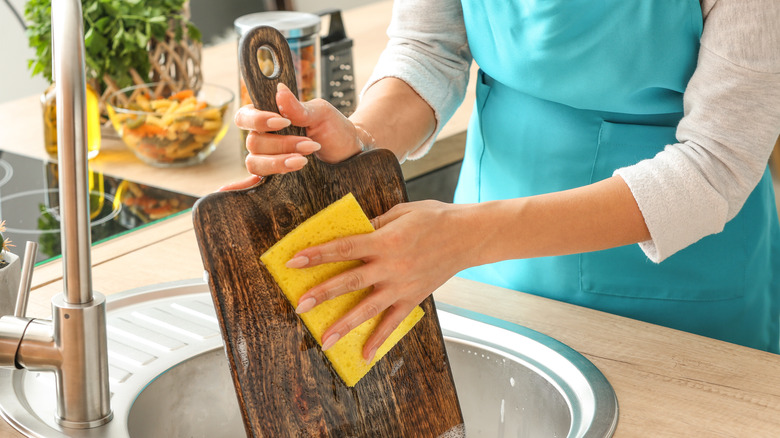Why You Should Stop Drying Your Wooden Cutting Board Lying Down
Cutting boards are an essential kitchen utility that comes in all shapes and sizes and have a wide variety of functions. While they can vary in thickness and measurements, they are also often made of differing materials for different purposes.
You may have wondered while standing in the middle of a store aisle, whether a plastic or wooden cutting board is better for you, and the answer to that can change. According to Serious Eats, wood is a more sanitary, durable, and knife-friendly material. However, they are more work to clean and upkeep than an inexpensive plastic board. Plastic is easy to clean and low maintenance, but it will more likely need to be replaced quickly and aren't so great on your chef knives over time. The solution — get one of each! Both have their benefits, but it is worth it to put in the extra work to keep them functional for a long time.
But since wood is more high-maintenance than a cheap plastic cutting board, it is important to know how to clean it right, and that requires drying your cutting board properly as well.
How to dry your cutting board
If your wooden cutting board is not looking quite up to par these days, you're not alone. Cracking and warping can occur in wooden cutting boards over time, but it can be prevented if proper treatment takes place. There are a few rules to follow, including always hand washing your boards. The water in a dishwasher can cause cracks in the board, which become breeding grounds for bacteria. Instead, wash by hand with dish soap — making sure to get both sides — and then let dry, according to Real Simple. However, the Kitchn suggests making sure your board stays in an upright position while drying. Since wood absorbs moisture, and will retain it after a good hand wash, it is important to make sure it dries out evenly.
The site writes, "By standing the board on its edge, you are allowing the broadest section of the board to air dry as quickly and as evenly as possible ...This prevents one side from drying faster than the other side, which would open the door to shrinkage or cupping of the wood on the drier side."
If this is done, along with proper oiling, your wooden boards should retain their newly-bought glow, even if they're getting up there in age.

